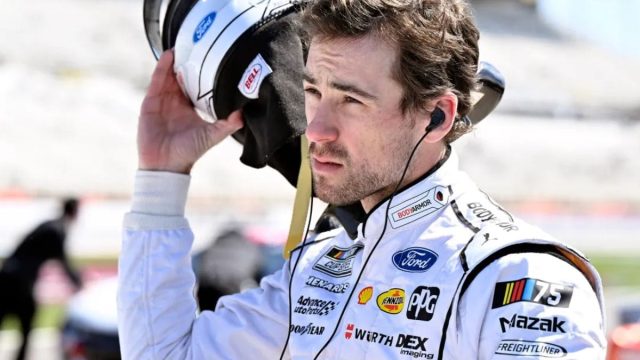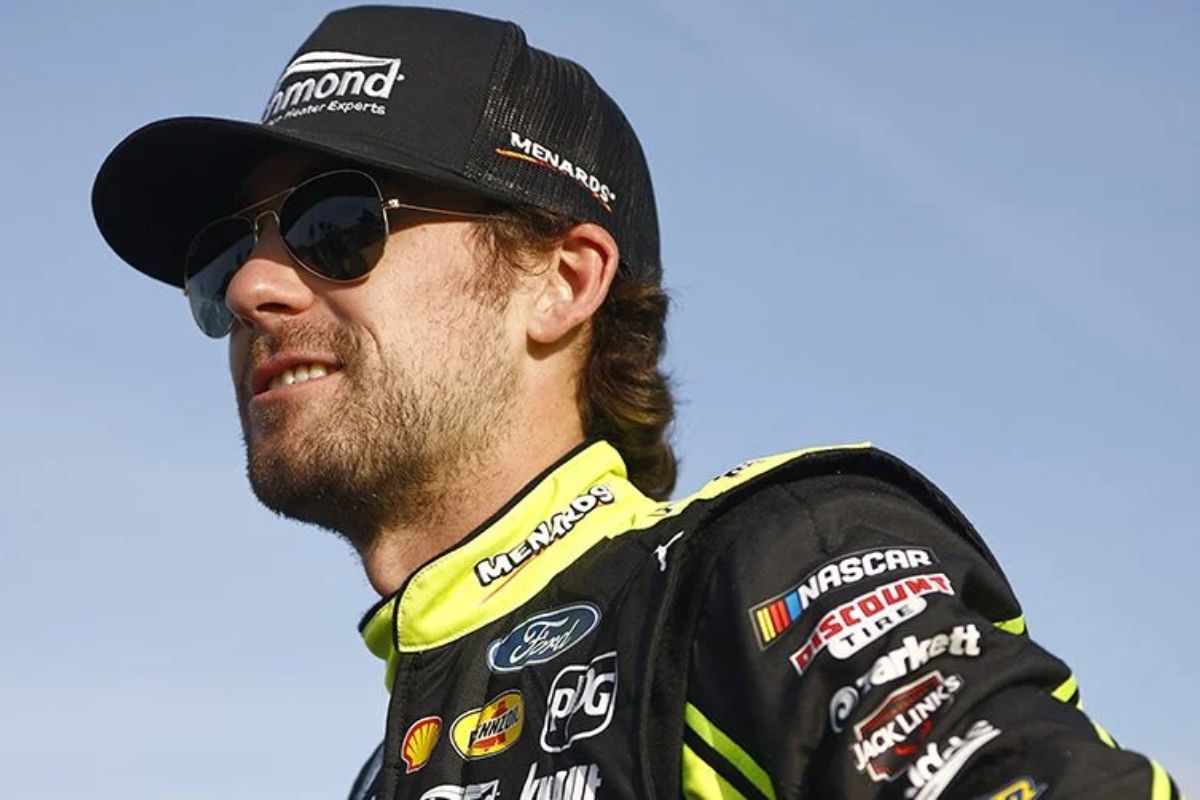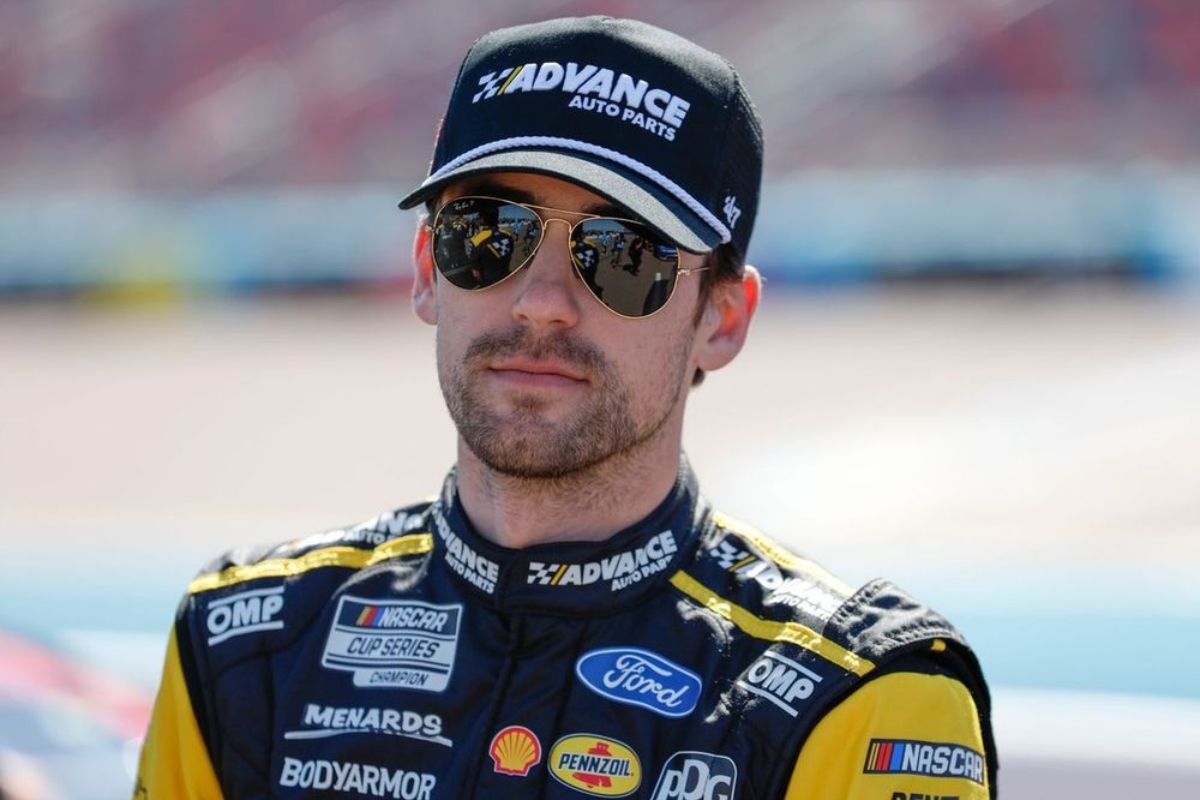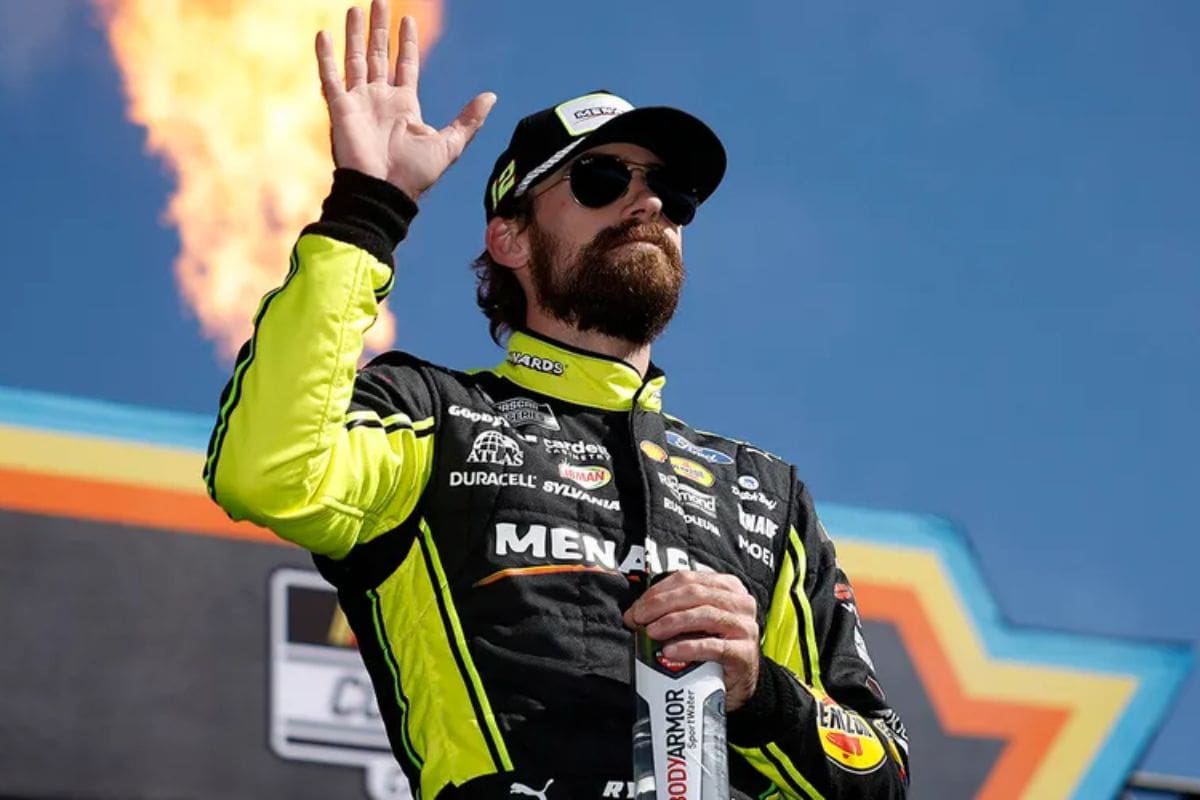Ryan Blaney Aims to Heat Up: Ryan Blaney‘s recent victory at Iowa Speedway has not only boosted his standing in the championship race but also highlighted his ability to skillfully balance aggressive driving with tactical expertise. Under the guidance of crew chief Jonathan Hassler, Blaney’s team is utilizing advanced data analytics and cohesive teamwork to navigate the diverse track conditions that characterize NASCAR’s summer stretch. As Blaney focuses on optimizing car performance and strategic adaptability, the question arises: can this momentum be maintained to secure multiple victories in the challenging weeks ahead?
Key Highlights
- Ryan Blaney’s recent victory at Iowa Speedway set alight momentum for the summer NASCAR stretch.
- Strategic focus on driver conditioning and endurance to excel in diverse track conditions.
- Data-driven adjustments and improved pit crew coordination are central to their summer strategy.
- The team aims for multiple victories by leveraging historical data and real-time performance metrics.
- Enhanced mental strength and team cohesion are prioritized for consistent high performance.
Ryan Blaney’s Victory at Iowa Speedway
Ryan Blaney’s victory at Iowa Speedway, a significant moment for the No. 12 team, not only restore their competitive edge but also highlighted their strategic skill under the guidance of crew chief Jonathan Hassler. The win at the Iowa Corn 350 was more than just a checkered flag; it was a confirmation of the careful planning and execution that defined the team’s approach to the season.
“Hey, we talked about being a team of the summer,” Hassler said. “We did it.”
Blaney’s performance was a masterclass in balancing aggressive racing with tactical precision, showing the synergy between driver and crew that is vital for sustained success in NASCAR.
The Iowa Speedway, with its unique blend of short-track characteristics and high-speed sections, posed a formidable challenge. Yet, Blaney and Hassler turned this challenge into an opportunity. By optimizing their car setup and making timely adjustments during the race, they were able to navigate the intricacies of the track with remarkable efficiency. Hassler’s decisions on pit strategy were crucial, enabling Blaney to maintain a competitive position throughout the race and ultimately secure the victory.
This win was not just a standalone success but a significant achievement that reaffirmed the No. 12 team’s status as a strong contender. It also demonstrated their ability to adapt and excel under varying conditions, a skill that is vital for capitalizing on the diverse tracks in the NASCAR circuit.
Summer Season Strategy
Building on the momentum from their successful performance at Iowa Speedway, the No. 12 team is now carefully crafting their strategy for the important summer season. Recognizing that NASCAR’s summer stretch, which unofficially kicks off post-Memorial Day, is critical for setting the tone for the remainder of the season, Ryan Blaney and his team are leaving no stone unturned in their preparation.
“If you look back to last year, we won the Coke 600, had a decent run at Gateway (St. Louis) and then I think we had a month, month and a half of struggling to find our way,”
“It wasn’t until early in the middle of the first round of the playoffs, somewhere in there that we really got things rolling again, and we wanted to be better earlier in the year. We wanted to improve our road course program. If you look at last week at Sonoma, we’ve done that.”
“That’s a big part of the summer. So, yeah, I’m excited with where we’re at (now).” – Hassler
The team’s approach to the summer season is multifaceted, leveraging both historical data and real-time performance metrics to gain a competitive edge. Here are three critical components of their summer strategy:
- Adaptation to Track Conditions: The diverse track conditions encountered during summer races, from the scorching heat of Daytona to the varying terrains of road courses, necessitate a flexible approach. The No. 12 team is focusing on fine-tuning their car setups to ensure excellent performance across different environments.
- Driver Conditioning: Endurance and peak physical fitness are vital during the demanding summer months. Blaney’s regimen includes advanced physical training and nutritional plans tailored to withstand the intense heat and long race hours, ensuring he remains sharp and resilient.
- Data-Driven Decisions: Utilizing cutting-edge telemetry and analytics, the team is constantly refining their strategies. This includes real-time adjustments during races and pre-race simulations that incorporate variables specific to summer race conditions, such as tire wear rates and fuel consumption.
As they navigate the summer stretch, the No. 12 team’s holistic strategy aims to maintain their upward trajectory, translating their preparation and adaptability into on-track success.
Past Summer Performance Comparison
Reflecting on the previous summer’s challenges, the No. 12 team has conducted an analysis to identify key areas for improvement and guarantee a more competitive performance this season. Last year, Ryan Blaney and his team faced a series of hurdles that hindered their ability to secure consistent results during the summer stretch. The primary issues included difficulties in maintaining competitive pace, suboptimal race strategies, and occasional mechanical setbacks that collectively stymied their progress.
We didn’t have a great summer last year.”
“After Gateway last year, we had like two months of just not running good at all. No pace. Not finishing races. I had to hear stuff from you all, all summer that we sucked. And we did. We just weren’t very good, and we were trying some stuff, but we fixed that.
“We talked about that during the off-season of, ‘Hey, let’s focus on these summer months. Let’s not go through that little dip like we did last year. Just utilize the summer months a little better than what we did.’ That was cool that we were able to achieve that because we worked really hard on that; tried to be better at this point of the year, at a better time than last year. So, hopefully that continues.” -blaney
An in-depth review of last season revealed that the team often struggled with tire management and race setups that did not perfectly align with track conditions. These factors, coupled with sporadic miscommunications during pit stops, compounded their woes, leading to finishes that were less than reflective of Blaney’s true capabilities.
The No. 12 team has revamped its approach by integrating sophisticated data analytics to fine-tune car setups tailored for each specific track. This season, they have placed a heightened focus on improving pit crew coordination and enhancing real-time communication strategies. Collaborative efforts with engineers have yielded new insights into tire wear patterns, allowing for more precise adjustments during races.
Current Standings and Recent Performance
Blaney’s recent surge in the championship standings, fueled by his remarkable victory at Iowa, highlights the No. 12 team’s strategic improvements and newfound consistency. This key win catapulted him from 12th to seventh place, emphasizing a significant leap in performance metrics that were previously hard to achieve. Importantly, Blaney’s ability to lead a substantial number of laps in the recent races serves as a confirmation to the team’s enhanced speed and tactical skills.
- Tactical Pit Stops: The No. 12 team’s pit crew has noticeably reduced their average pit stop time, thereby minimizing downtime and maximizing track position. This efficiency has allowed Blaney to consistently stay within striking distance of the lead pack.
- Improved Car Performance: The engineering team has made significant strides in tuning the car setup, resulting in improved aerodynamics and tire management. These adjustments have been crucial in maintaining competitive lap times, especially in the closing stages of races.
- Driver Adaptability: Blaney’s ability to adapt to varying track conditions and his increased confidence in overtaking have played an important role in his recent performances. His tactical precision in maneuvering through traffic has minimized race-day errors, a factor that plagued his previous season.
Blaney’s upward trajectory in the standings is not solely the result of a single victory but a combination of methodical improvements. The synergy between driver and team has translated into a more formidable presence on the track, poised to capitalize on the momentum gained. This newfound consistency will be vital as Blaney aims to solidify his position within the top tier of the NASCAR standings, setting the stage for a potentially game-changing summer stretch.
Team Goals and Future Outlook
As the summer stretch unfolds, the No. 12 team has carefully outlined a set of ambitious goals aimed at sustaining and amplifying their recent competitive surge. With Ryan Blaney at the helm, the team is focusing on both immediate performance gains and long-term strategic advantages. By identifying key areas for improvement based on last year’s challenges, they are poised to refine their race-day execution and improve their efficiency.
“Yeah, it came up when we had a few bad races in a row, got wrecked out, stuff like that.”
“But it was mainly talks with our group, our whole team, about looking forward to being a summer team. Every off-season, you try to fix things: what did we not do well in the prior year? That was one of them that we had a bad summer and let’s try to fix that.” – Blaney
The team’s objectives are multi-faceted, combining tactical adjustments with a mental edge. They recognize that maintaining a competitive edge requires an intricate balance of speed, consistency, and adaptability.
“How do we do that? How do we learn quicker to be more competitive through the summer months? So, it’s nice when you set goals like that as a team and then achieve them. That part is good.” – Blaney
Blaney’s team is not only focused on tangible performance metrics but also on fostering an environment where each member can thrive under challenges. This holistic approach is designed to make sure that every aspect of the team is operating at its peak. By addressing both technical and psychological components, they aim to create a sustainable model for success that can endure the demanding demands of the NASCAR season.
News in Brief: Ryan Blaney Aims to Heat Up
Blaney’s success at Iowa Speedway and strategic skill under crew chief Jonathan Hassler highlight an astute approach to NASCAR’s summer stretch. By leveraging data-driven decisions and team cohesion, the team aims to optimize car performance and secure more victories.
This balanced methodology, along with a focus on adapting to varied track conditions, positions Blaney as a formidable contender in the championship standings, reinforcing a competitive edge that could define the season’s latter half.
Our Reader’s Queries
Q. Where is Ryan Blaney from?
A. Ryan Blaney, reigning NASCAR Cup Series Champion, hails from Ohio but grew up in North Carolina. Interestingly, his mother, Lisa, has roots in Chariton, located roughly an hour southeast of Des Moines. Adding to the family’s racing legacy, Blaney’s father, Dave, achieved a notable victory by winning the 1997 Knoxville Nationals.
Q. How many wins does Ryan Blaney have?
A. This win marked Blaney’s first of the season and the 11th of his career.
Q. How much does Ryan Blaney make a year?
A. Blaney currently earns about $1.9 million per year racing for Team Penske, not including his endorsement earnings and season bonuses. His status as the defending Cup Series champion is expected to bring a salary boost his way.
ALSO READ: Ryan Blaney Upstages Kyle Larson at Iowa’s First Stage



